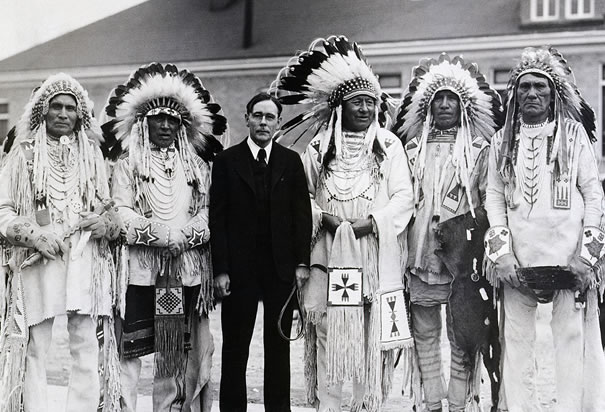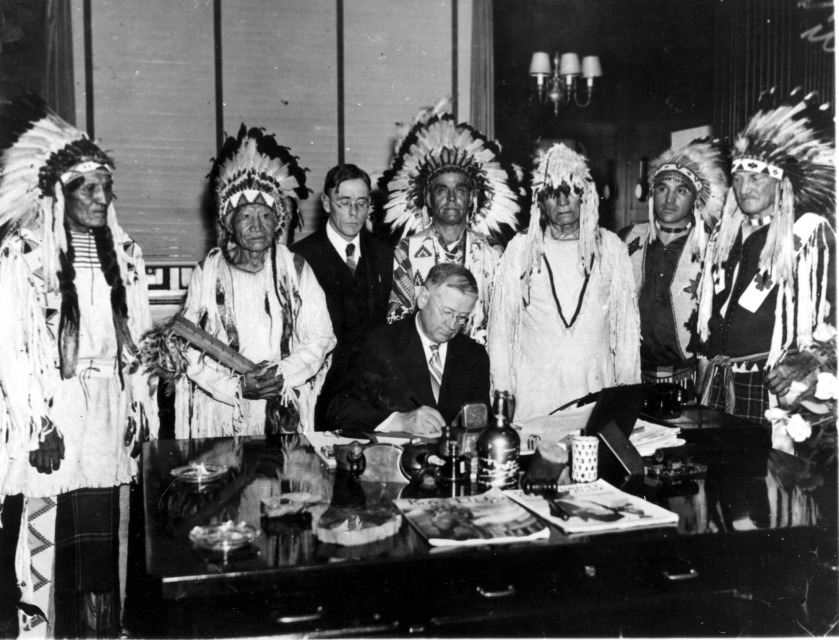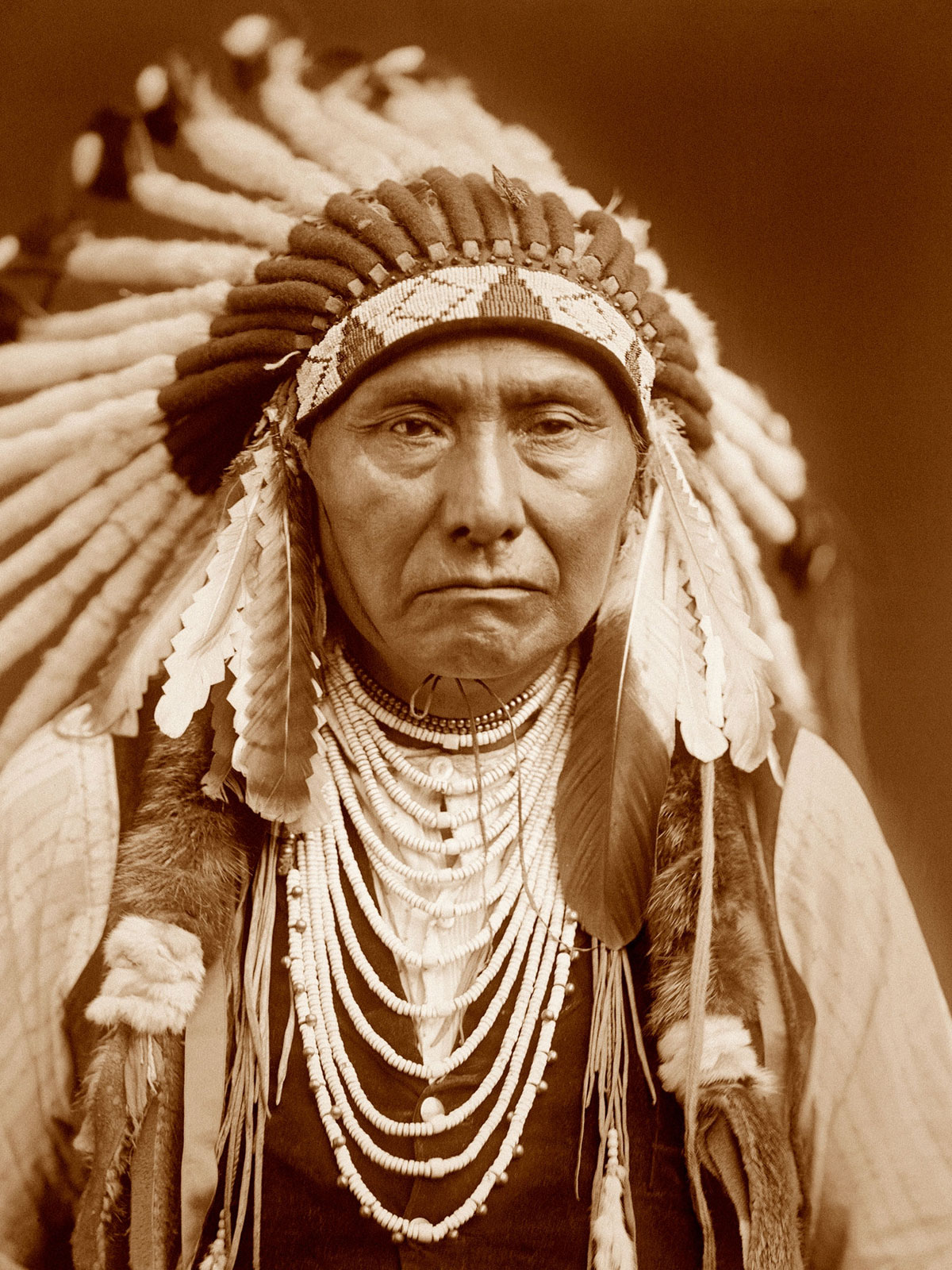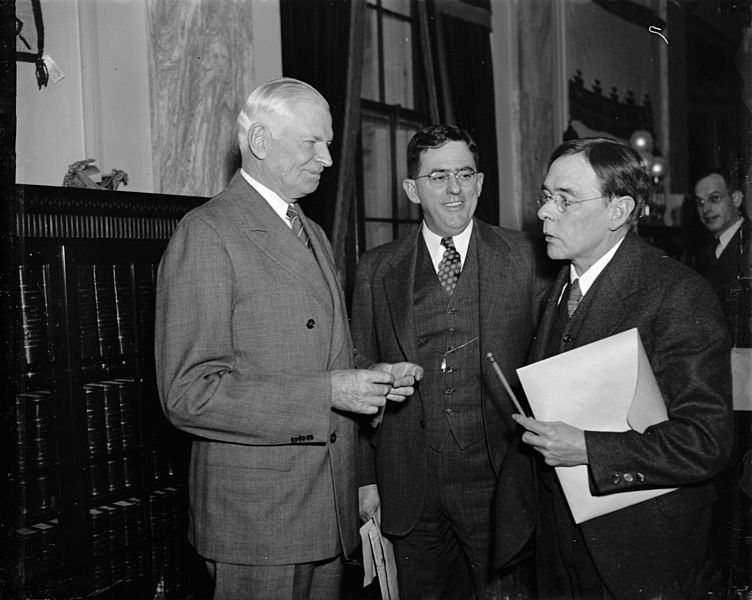 |
Commisioner of Indian Affairs John Collier
meets with South Dakota Blackfoot Indian chiefs in 1934 |
Edwin Embree was one of the few who discerned the basic validity of Collier's approach. His book
Indians of the Americas, written in 1939, five years after the enactment of the Indian Reorganization Act, was one o the first attempts to place the new Indian policy in an intelligent light. Embree sought to span the myriad Indian tribes and cultures by discussing a few of the most spectacular and divergent tribes. In the United States proper he dwelt on the Iroquois, the Pueblos and the Oglala Sioux, while the big-three nations of the south, the Maya, Aztecs, and Incas, served to ilustrate the Indian nations of Central and South America.
In a real sense, Embree was guilty of romanticizing the tribes he covered. The days of buffalo-hunting, pyramid-building, and trade wars of the eastern wood-lands were only misty memories when Embree wrote; he might better have written of the contemporary cultures of those tribes during the Depression years. But his period was a time of startling revision of the meaning and importance of culture. In such a period of flux, perhaps no one could blame Embree for seeking to represent culture in its traditional state of purity. by adopting this approach he was able to show the life-styles of the respective tribes and how these had politely bowed to the modern world but yet remained fundamentally untouched.
 |
| The Indian Orgamization Act of 1934 |
The important contribution of Embree's book was to assist in the defense of Indian tribal cultures and governments at a time when they sorely needed defense. The ensuing three decades have shown beyond doubt that the policies advocated by John Collier have been beneficial to Indian people. Today Indian tribes largely pay for their own governments out of tribal income developed under enterprises originally chartered under the Indian Reorganization Act provisions. The shrinking land base has been fairly well stabilized. With the social programs of the last decade initiated by such agencies as the Office of Economic Opportunity, the Area Redevelopment Administration (later renamed Economic Development Administration), and the Housing and Urban Development Department, Indian tribes have accomplished a great deal in bringing a decent standard of living to the people on the reservations.
 |
| Engraving of the American Indian town of Pomeiooc. |
Embree's concluding chapter is somewhat dated, yet it retains a basic understanding o the nature of the cultural clash between the immigrant whites and the original inhabitants of this continent -a conflict that is yet to be resolved. Indians are no longer a scattered and broken people. Migrations to the urban areas during the Second World War and the Korean conflict created an urban population that is now larger than the reservation population. The Indian birth-rate has remained consistently high, so that the reservation population is now, in spite of constant departures of families, higher than at any time since the reservations were established.



 Twitter
Twitter Facebook
Facebook Flickr
Flickr RSS
RSS









